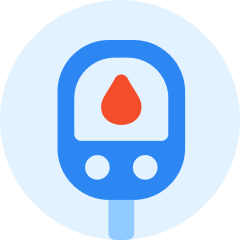Knowing the right first aid for heart attack could save a life.
A heart attack, or myocardial infarction, happens when the blood supply towards the heart is blocked. When there’s a lack of blood supply, it can severely damage the heart muscle.
If not urgently treated, it can be life-threatening.
Many patients who suffer from heart attacks die before reaching the hospital. This is why it is critical to take them to the emergency room as fast as you can for a better chance of survival. The quicker the medical treatment they get, the lesser amount of heart damage they suffer.
Read on to learn more about first aid for heart attack.
First Aid for Heart Attack: Know the Warning Signs and Symptoms
A person with a heart attack can either experience the symptoms hours, days, or weeks ahead of time.
It typically causes pain in the chest for more than 15 minutes. However, there are cases when people with heart attacks may not experience severe chest pain or none at all, especially for women. And most of the time, the pain can be mistaken for indigestion because it is just mild.
 Symptoms of a heart attack can be any or all of the following:
Symptoms of a heart attack can be any or all of the following:
- The chest can feel an uncomfortable pressure that is similar to being squeezed by a heavy object.
- The discomfort or pain can intensify from the chest to the shoulders, arms, and back.
- Sweating
- Lightheadedness, dizziness, fainting
- Shortness of breath
- Feeling nauseous
- Very pale-looking
First Aid for Heart Attack
Call 911 immediately
Remember: to begin proper first aid for heart attack, call emergency help. Contact 911 right away when a person suddenly collapses and is unresponsive to you. Keep in mind that receiving immediate care may prevent their heart from stopping and may help lessen the damage to the heart muscle.
Aside from 911, you can also make other calls such as the patient’s insurance company, doctor, and important family members.
There are insurance health plans that provide coverage for emergency care at the nearest medical facility. They will call their emergency network provider and give you the right procedures for first-aid.
Loosen tight clothing and put them in a comfortable position
After calling for help, the next first step when administering first aid for heart attack is to reposition the patient.
Allow the patient to rest in a half-sitting position with back and head support. To assist breathing, loosen any tight clothing especially at the neck and waist.
Stay calm
It is important to always stay calm in this kind of medical emergency. When the patient is anxious, it can worsen the situation because his heart will need more oxygen. So if you are helping someone who is having a heart attack, do not panic and tell the patient to take deep breaths and remind them that help is on the way.
Do CPR if the patient is unconscious
CPR is done when the patient becomes unconscious and stops breathing. If you do not have CPR training, doctors will advise you to perform 100 to 120 chest compression per minute.
The emergency dispatcher on the telephone will instruct you on the proper actions until the medical help arrives.

First Aid for Heart Attack: What to do if you are on your own
- Do not attempt to drive and go to the hospital or emergency room all by yourself.
- Call 911, a family member, or a friend to notify them of your situation and ask them to come at once.
- Try to unlock your front door and make a lazy ‘W’ sitting position against the wall or a steady piece of furniture.
- Your doctor may prescribe Glyceryl Trinitrate (GTN) medication to widen your coronary arteries and improve the oxygen supply to your muscle heart and minimize the pain.
Two urban myths to debunk
There are first-aid actions going around online and from other people that are not yet proven and supported by doctors.
People should ignore these urban myths when dealing with a heart attack:
Cough CPR
This is when you have to breathe deeply and cough strenuously. Doing cough CPR is believed to squeeze the heart and maintain the blood circulation. As of today, there is no medical evidence that this procedure might work.
Cayenne pepper and water
Some people advise a heart attack patient to drink water mixed with a spoonful of cayenne pepper. They say that this can increase the heart rate and rebalance blood circulation all throughout the body. But there is still no medical evidence whether cayenne pepper can act as emergency aid for a heart attack or not.
Things to take to the hospital
If you have heart disease or have a risk for a heart attack, it is important to always bring a list of your medical problems, medications, and allergies to the hospital.
Aside from these, one should also have a list of the following and keep this in their wallet or bag, in case of any emergency:
- Your complete address
- Important people to be called in an emergency, such as your spouse or partner, and their phone numbers
- Your doctor’s name and contact number
- Your insurance information
Key Takeaways
Every minute counts when it comes to first aid for heart attack. The longer they do not receive care, the more it will cause damage to their heart muscle.
The key takeaway is to get help right away. Even before emergency help arrives, the dispatcher will give you the most efficient procedures to help the patient.
If you are someone who is at risk of heart attack, never panic, always bring your medications with you, and let a trusted person know your medical situation. Remember: administering the right first-aid for heart attack calmly can be a life-saver when dealing with this serious medical emergency.
Learn more about heart health here.
[embed-health-tool-heart-rate]























